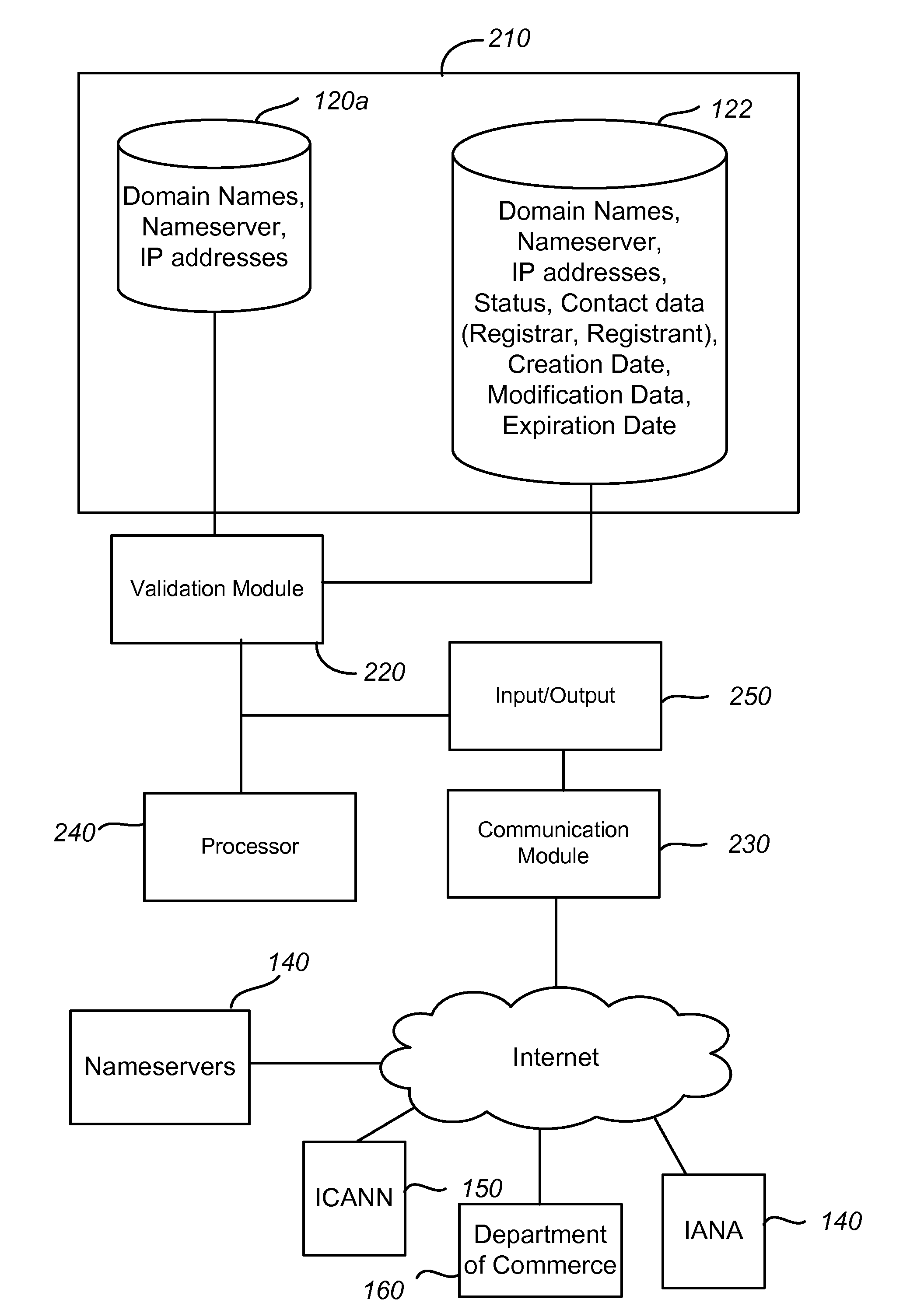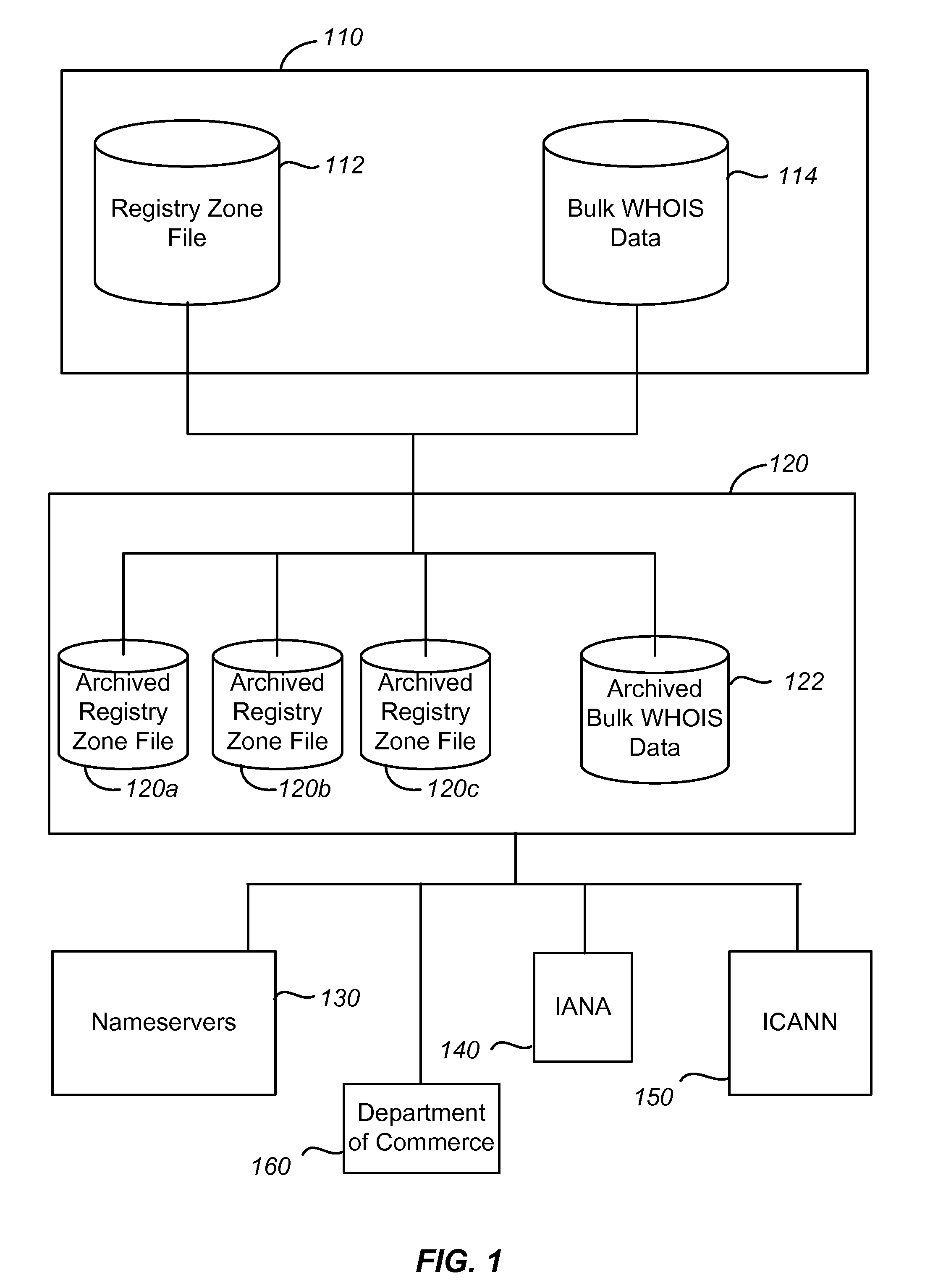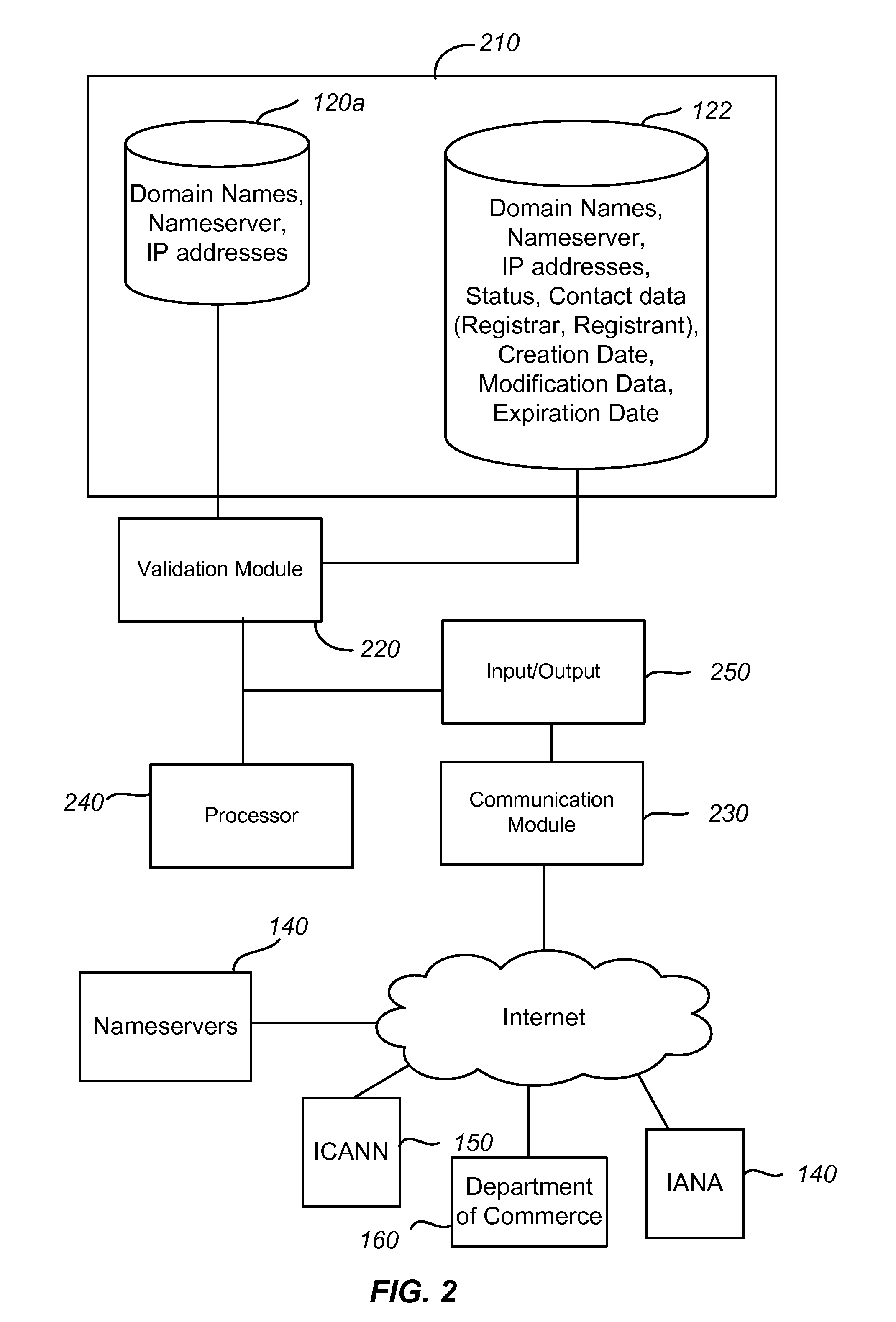Method and system for recovery of a failed registry
a registry and recovery method technology, applied in error detection/correction, digital computers, instruments, etc., can solve problems such as reducing the recovery time of failed registry, affecting the recovery process, so as to reduce the downtime of failed registry, reduce the downtime of registry failure, and accelerate the recovery
- Summary
- Abstract
- Description
- Claims
- Application Information
AI Technical Summary
Benefits of technology
Problems solved by technology
Method used
Image
Examples
Embodiment Construction
[0020]The failure of a registry based on either technical reasons (e.g., damage to internet infrastructure) or business reasons (e.g., bankruptcy of a registry) can result in loss of registry functions until the registry is recovered. The inventors have determined that known methods and systems needed to rapidly recover the functionality of the registry and thereby restore critical registry services are likely to prove insufficient. Thus, embodiments of the present invention provide methods and systems to rapidly recover registry functions, preventing erosion of the reputation of the failed TLD, which could result in a decrease in public confidence in the domain name space.
[0021]Utilizing embodiments of the present invention, the registry recovery process can quickly migrate critical operations to recover the failed registry either through coordination with the registry operator or as a component of an approved / required ICANN registry failover process. As described more fully throug...
PUM
 Login to View More
Login to View More Abstract
Description
Claims
Application Information
 Login to View More
Login to View More - R&D
- Intellectual Property
- Life Sciences
- Materials
- Tech Scout
- Unparalleled Data Quality
- Higher Quality Content
- 60% Fewer Hallucinations
Browse by: Latest US Patents, China's latest patents, Technical Efficacy Thesaurus, Application Domain, Technology Topic, Popular Technical Reports.
© 2025 PatSnap. All rights reserved.Legal|Privacy policy|Modern Slavery Act Transparency Statement|Sitemap|About US| Contact US: help@patsnap.com



